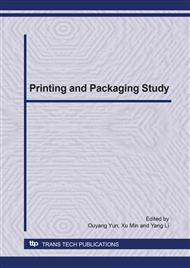p.490
p.494
p.498
p.502
p.506
p.510
p.513
p.517
p.521
Modeling for Dynamic Properties of Honeycomb Paperboard by the Restoring Force-State Mapping Method
Abstract:
The realization of the potential of honeycomb paperboard as an important cushion material in packaging has inspired a close scrutiny of its properties. In present work, the force-state mapping technique is successfully applied to the honeycomb paperboard dynamical properties modeling problem. A experiment system is set up to learn the dynamic properties of the honeycomb paperboard. According to the experiment data and the force-state mapping method, the model governing the dynamics of honeycomb paperboard-mass system is established. This model can be used to predict the vibration transmissibility of the system. The comparison of the measured and predicted vibration transmissibility indicates this model can predict the resonance frequency well, the measured resonance altitude is about 20% greater than the predicted altitude, the possible sources of this error is discussed.
Info:
Periodical:
Pages:
506-509
Citation:
Online since:
December 2010
Authors:
Price:
Сopyright:
© 2011 Trans Tech Publications Ltd. All Rights Reserved
Share:
Citation:


